Don't wanna be here? Send us removal request.
Text
Pool water turning hair green
It's a hot weekend. So it has been decided that there will be a pool party for the family. Everyone had an awesome time. However, at the end of the day, their blonde hair has been tinted green. Sensibly, you wonder what happened.
Pool water turning hair green is not uncommon. Swimmers normally suffer from this problem. Most people assume that this is from chlorine in the water. Not a surprising assumption considering pool water is highly chlorinated. However, chlorine is not really the problem. The cause of greening is copper. Okay. I guess we could say that chlorine is partially responsible. Because what causes greening is the oxidation of copper by chlorine.
The oxidized copper then binds unto the strands of the hair. Those with blonde hair, the greening can be quite noticeable.
Water contamination has many signs. Most people know to be wary about unusual color, flavor, and odor of drinking water. But about water not used for drinking?
Just because water is not used for consumption does not mean people should not care what is in it. Some contaminants can harm you even if you don't drink the water. Take radon for example. The radioactive gas is naturally found deposited underground where it can contaminate groundwater. The dissolved radon from the water can escape to the air. Inhalation of radon can cause lung problems.
It is important to know about other signs of contamination as these can tell you what type of contaminant is potentially in the water even before a water analysis is done.
0 notes
Text
Why regular water analysis is important
Regular analysis is essential to ensure safety and quality of water. It is especially important for those using private wells. The analysis reveals contaminants in the water that can make it unsuitable for consumption and other uses. Annual water analysis is recommended for households and establishments that use private wells as the water source.
Regular analysis is needed since environmental conditions can change which can then affect water quality and safety. Human activities can introduce all new contaminants in the water. Take agriculture for example. Pesticides and fertilizers can seep into the ground to contaminate groundwater or get washed away by streams into rivers, lakes, and other bodies of surface water.
Natural changes like rivers and streams changing course can also bring in new contaminants. Floods and earthquakes are known to introduce contaminants to surface and groundwater.
So, you might be wondering. How do you go about water analysis?
There are testing kits available that you can use anytime at your convenience. The testing kits are intended to provide a general idea of the quality of water. It won't tell you how much or what specific types of contaminants are in the water. However, the information it does provide is sufficient and important in guiding you to your next step.
If you want to a more precise method of analysis, you can collect a water sample and have it tested by a laboratory. You can call the environmental protection agency or an equivalent government agency and they will refer you to a local testing laboratory.
Water analysis is very important for you and your family's safety. Fortunately, going about it is quite easy.
0 notes
Text
Why regular water analysis is important
The regular analysis is essential to ensure safety and quality of water. It is especially important for those using private wells. The analysis reveals contaminants in the water that can make it unsuitable for consumption and other uses. Annual water analysis is recommended for households and establishments that use private wells as the water source.
A regular analysis is needed since environmental conditions can change which can then affect water quality and safety. Human activities can introduce all new contaminants in the water. Take agriculture for example. Pesticides and fertilizers can seep into the ground to contaminate groundwater or get washed away by streams into rivers, lakes, and other bodies of surface water.
Natural changes like rivers and streams changing course can also bring in new contaminants. Floods and earthquakes are known to introduce contaminants to surface and groundwater.
So, you might be wondering. How do you go about water analysis?
There are testing kits available that you can use anytime at your convenience. The testing kits are intended to provide a general idea of the quality of water. It won't tell you how much or what specific types of contaminants are in the water. However, the information it does provide is sufficient and important in guiding you to your next step.
If you want a more precise method of analysis, you can collect a water sample and have it tested by a laboratory. You can call the environmental protection agency or an equivalent government agency and they will refer you to the local testing laboratory.
Water analysis is very important for you and your family's safety. Fortunately, going about it is quite easy.
0 notes
Text
Iron In Water
Iron accumulation within the pipes system could additionally occur. This could create clogs which restrict the quantity of water draining of the taps. Clogs could likewise produce unusual stress within the pipes system which enhances the probability of leakages
There are 2 apparent indicators that will certainly inform you if iron remains in your water. First is the red-brownish color of the water. The 2nd one is the odor of corrosion. In between both, the scent of corrosion is a lot less complicated to spot. You could scent it when alcohol consumption and also it offers a dreadful aftertaste.
Although typically risk-free. There are some negative impacts brought on by iron in the water. One is the discoloration of cooking area and also bathroom components. Brownish discolorations are really noticeable on white and also various other light surface areas.
Iron contamination
in water is reasonably safe. The quantity of iron in the water needs to be really high to posture significant hazard to wellness. Water that has unsafe degrees of iron would certainly have unbearable look, scent, and also taste. The danger of mistakenly consuming this water is impossibly reduced.
Besides iron, there are various other usually safe chemicals in the water. Iron could respond to these various other chemicals as well as generate substances that could quicken destruction of pipes parts.
These issues could be stopped by making use of
iron filters
. There are several types of iron filters created for various applications. Some are made for individual or residence usage. Others are produced massive industrial applications.
0 notes
Text
Just what is water conditioning?
Offered specific problems, the liquified mineral carbonate in water could speed up or become strong down payments. Carbonate down payments are referred to as chalk or limescale, or just range. That is why a water softening system is occasionally described as range filter.
Water conditioning is a water therapy procedure that gets rid of mineral carbonates from the water. Water including mineral carbonates as well as various other minerals is called tough water. Tough water posture little to no danger to the wellness of individuals consuming alcohol the water. It can, nevertheless, create some severe troubles in residences.
There are water conditioning systems created for residence usage. These systems not just boost water high quality yet likewise aid safeguard the worth of the building.
Repairing the issues brought on by mineral carbonates could be really costly. You will certainly need to change parts. It is constantly far better to stop them.
0 notes
Text
What is chalk?
Scale buildup is a common water problem. It is caused by precipitation of dissolved minerals in the water. Precipitation is a process in which dissolved substances turn solid. The solidified minerals can attach to and build upon the internal surfaces of water pipes and containers. Over time, the buildups become thicker. This can cause blockage in water pathways and cause pressure problems. This can also cause heating elements to become less efficient which increases power consumption. A scale filter, for the most part, can prevent the problems caused by scale buildup.
To get a clear understanding of how scale filters work, information on chalk can be helpful. A primary component of scale is chalk. Anyone who has been to school is familiar with chalk. However, there is more to chalk than something to write on the blackboard. So, what really is chalk and where does it come from?
Chalk is a sedimentary carbonate rock. It is a type of limestone and is primarily made of the mineral calcite. Now, this is where it gets neat. Calcite is made up of millions of shells of dead marine microorganisms.
When viewed under the microscope, chalk can be seen as composed almost completely of shells from microorganisms called coccolithophores. The shells are called coccoliths. Those millions of dead corpses gradually accumulated under the sea for millions of years to form rocks. Afterward, earth movements cause the sea floor to shift up above the sea level.
The layer of sedimentary carbonate rocks is excellent at holding groundwater. But as we extract water for our use, it is impossible to avoid the water from containing dissolved chalk. And as such, we have the challenge of managing scale buildup.
0 notes
Text
Improve Water Taste By Removing Iron
As water flows over and under the earth, it collects minerals. Iron is a very common mineral. It is therefore not surprising that iron contamination of water is very common. Much of iron and other contaminants in the water is removed during water treatment at water processing plants. However, some can remain. The remaining iron affects the taste of the water.
Iron contamination makes water taste awful. The water smells of rust. Depending on the amount of iron contaminant, the color might also turn slightly reddish-brown. I remember spending some time in a rural town where water was drawn from the private well. The water contained iron. I had to hold my breath every time I drank water to make it bearable. Even taking a bath, I could smell rust.
So how do you solve this? Simple really. You just have to remove iron from the water. There are many home iron filters that can be bought from physical retailers or online. There are small individual types that you can install on individual faucets that you use for drinking water. There are also whole-house iron filters. If you are only concerned with your drinking water quality, one of the small individual types should be sufficient.
Whole-house iron filters are intended to prevent all unwanted effects of iron contamination. These type of iron filters are more complex and are installed prior to the water coming into the house plumbing. These don't only improve the taste of water. They also prevent staining of surfaces and corrosion of metal pipes and water appliance components. You could say that whole-house iron filters protect your property.
0 notes
Text
Iron In Water
There are two obvious signs that will tell you if iron is in your water. First is the reddish brown tint of the water. The second one is the smell of rust. Between the two, the smell of rust is so much easier to detect. You can smell it when drinking and it gives an awful aftertaste.
Iron contamination in water is relatively harmless. The amount of iron in the water has to be very high to pose the serious threat to health. Water that has dangerous levels of iron would have the intolerable appearance, smell, and flavor. The risk of accidentally drinking this water is impossibly low.
Although generally safe. There are some unfavorable effects caused by iron in the water. One is the staining of kitchen and bath fixtures. Brown stains are very obvious on white and other light surfaces.
Aside from iron, there are other generally harmless chemicals in the water. Iron can react with these other chemicals and produce compounds that can speed up the degradation of plumbing components.
Iron buildup within the plumbing system can also happen. This can cause blockages which limit the volume of water flowing out of the faucets. Blockages can also create abnormal pressures within the plumbing system which increases the likelihood of leaks
These problems can be prevented with the use of iron filters. There are many kinds of iron filters designed for different applications. Some are designed for personal or home use. Others are made for large-scale commercial applications.
0 notes
Text
What Makes Iron Contamination Problematic?
According to the EPA, iron is classed as a nuisance contaminant. The substances that belong to this class of contaminants are considered non-health threatening. The amount of iron in the water has to be extremely high in order to pose any danger to health. It is very rare for this to happen. A water that is contaminated with iron is safe to drink or use for cooking. It is not surprising to that many people do not see the need to install a water filter for iron.
However, the presence of iron in the water can cause other problems. One problem is the corrosion of pipes. The presence of iron can lead to faster deterioration of metal pipes and other vessels. Some pipes contain dangerous metals like lead. The corrosion of the pipe releases these dangerous metals into the water. The damage to pipes caused by corrosion can also produce leaks in which other harmful contaminants can enter.
The corrosion of pipes also means that various water appliances are prone to breaking down which will then require expensive repairs.
Other effects of iron contamination involve the usability of the water. An iron-contaminated water can become unsuitable for many industrial applications. Using water that contains iron for washing laundry can discolor the fabrics. It is for these reasons that the use of iron filters must be carefully considered.
0 notes
Text
The Many Effects Of Iron-Contaminated Water
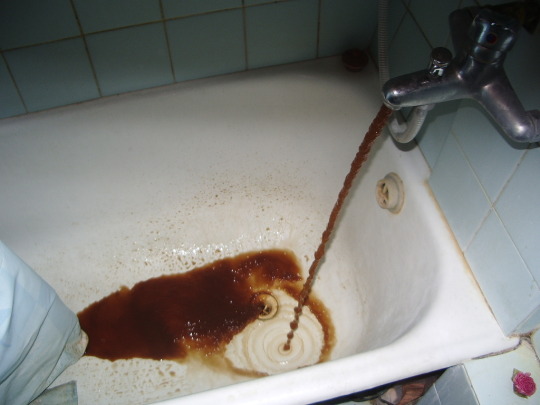
Iron contamination is one of the most common water problems. This water problem is often ignored because iron is non-health threatening. Not many people are willing to go through the trouble of installing a water filter for iron. Many do not know that iron-contaminated water can have serious effects.
A serious effect or iron contamination is the accelerated corrosion of metal pipes. The chemical reaction between the contaminated water and the metal pipes releases dangerous metals into the water. A common corrosion problem involves brass faucets and fixtures that releases copper. Some of these faucets and fixtures also contain lead solder which also gets released into the water and making it very dangerous for consumption.
Water appliances like dishwashers and water heaters can break down faster also due to corrosion. Having these appliances break down can be very troublesome and requires costly repairs.
Iron-contaminated water can ruin clothes, discolor ceramic tableware, and leave ugly marks on the kitchen fixtures. Iron also gives water an awful color, odor, and flavor which can discourage members of the household from drinking the recommended amount of water for staying healthy.
The good news is that iron contamination is not difficult to fix. There are many iron filters out there that perform a wonderful job of removing the contaminant and improving the quality of water. There are even iron filters that are portable enough for traveling.
0 notes
Text
Cartridge Filter For Swimming Pools
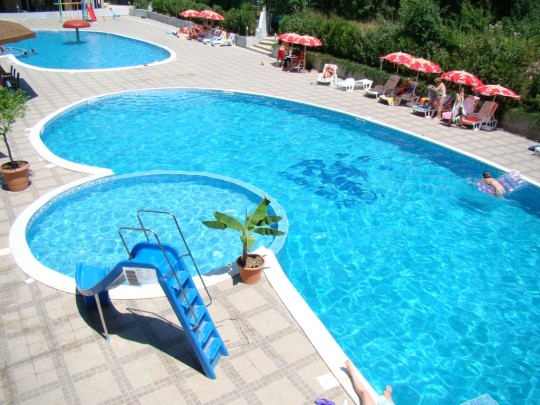
Many swimming pools have a water purification filter set upped. A cartridge filter is a water purification filter swell-suited for most swimming pools. It is easy to maintain. Cleaning the filter only requires high-pressure water and some cleaning agents. It is excellent at filtering big quantities of water. It does not constrict the flow of water like other filters do so the pump does not have to work as hard.
A swimming pool is a great facility to have. It is a true blessing throughout the warm summer season. It makes weekend breaks a lot more enjoyable for friends and families.
Having a pool requires tremendous amount of water. In order to minimize water expenses, many owners opt to use wells as water source for the pool. The problem with well water is that there may be unwanted substances in the water can cause injuries or health problems when ingested. Some contaminants can cause other inconveniences like discoloration of hair and clothes. This is the reason why majority of swimming pools have a water purification filter installed.
By keeping the water clean, the water filter also increases the time between changing water. This allows owners to conserve water. Although well water is free, it still remains an important resource that must be conserved.
0 notes
Text
What Are Solar Stills?
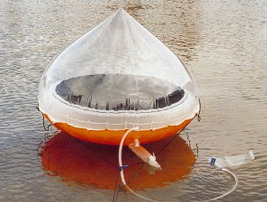
It is strange that even with all the technological advancements that have given us devices that allow us to perform tasks that would be impossible to do and connect with people from everywhere in the world anytime, we are still not able to fix the issue of providing everyone with adequate supply of clean water. It's not like we don't have the technology to produce clean water. In the west, any home that needs it can have a water purification filter installed. The profusion of the technology is proven by the availability of various iron filters. Imagine that we have so many purification solutions for a single water problem.
Nevertheless, the modern filtration technology and distribution system required to provide people from undeveloped countries are too expensive to build and maintain for them. And while many international organizations are pushing for the improvement of the economy of these countries, it will take a long time for any real economic stability and independence to take hold and people cannot wait that long. An effort must be made towards the implementation of simple and effective yet affordable water treatment systems. These are characteristics that solar stills hold.
Stills are huge containers covered by clear plastic or glass. The containers are filled with water and then exposed to sunlight. The heat of the sun causes the water to vaporize and leave pollutants behind. The vapor condenses on the plastic or glass covers and are then collected. The solar stills do not count on complex parts or processes. These are generally utilized for places that have limited accessibility to freshwater but have seawater.
0 notes
Text
Water Purification Filter: An Essential Travel Companion

Seeing new places and experiencing new things provides not only a fun experience but the potential for learning and having an improved understanding of the people from different cultures can be very valuable in this time and age. It is also a great way to get away from the stresses of work and other responsibilities and to reenergize. But in order for travel to offer these benefits, proper planning is needed. There are essential gears and items you need to take with you. is one of the most handy items you can take with you when traveling. Unless your travels are limited to major cities, you will encounter destinations that have a difficulty with clean water supply. A water purification filter helps remove contaminants from the water not only to make it safe but also to improve its flavor.
Here are some interesting water purification facts. Many contaminants can give the water poor taste or smell that makes it unpalatable. You need water to stay healthy but it is difficult to drink enough water if it taste awful.
There is a wide range of contaminants that cannot be detected through taste, smell, or sight. Just because the doesn't have any weird taste or smell does not mean it is completely safe to drink. A water purification filter suited for travel must be portable and be able to deal with the commonly encountered contaminants that make water unpalatable and unsafe.
0 notes
Text
Water In Our Daily Lives
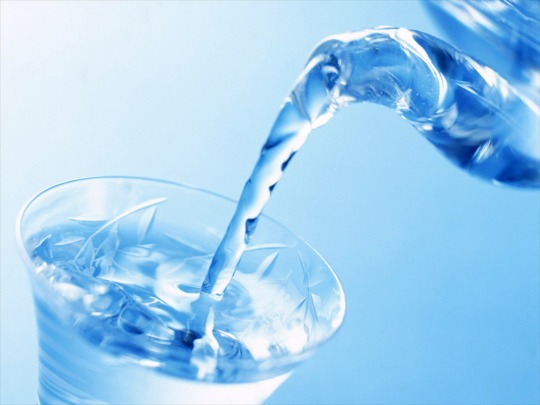
Clean water is important. Water analysis is conducted and water purification filter is used to provide people with sufficient clean water every day.
Human tissues need about 2.3 liters of water per day. Most people drink about 1 liter of water every per day. The rest of the water requirement is supplied by the food we eat. Just how much water is in our foods? The egg, a breakfast staple, is about 74 percent water. Watermelon, a summer favorite, is 92 percent water. A piece of lean meat is about 70 percent water.
We need plenty of water. A person that lives in the city consumes an average of 190 liters of water every day for personal and household uses. These include drinking, preparing meals, washing, and removing waste.
A bath in a tub consumes around 95 liters of water. If you are using a shower, know that 19 liters of water flow every minute. A good amount of water is needed to water gardens and sprinkle lawns. Water is also used in operating the air-conditioning units and heating systems of many homes, shops, and office buildings. Large amounts of water are used in irrigating farms, manufacturing industry, street cleaning, and for fighting fires.
A country like the United States consumes more than 416 billion liters of water every day. It is somewhat surprising how we can use so much water without running out of it.
0 notes
Text
Water In The World
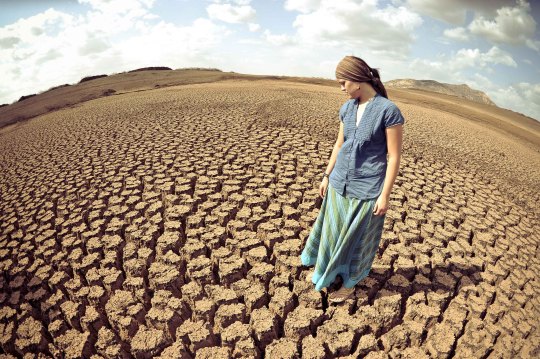
Life on earth would not be possible without water. We wouldn't be here today without water. This makes water one of the most important substance in the planet. That is why we often speak about water analysis and also processes like purification and using water softener to produce water that is safe and suitable for industrial uses.
There is plenty of water on Earth. You can get water from lakes, ponds, rain, rivers, spring, streams and wells. Almost three fourths of the planet's surface is covered by this valuable liquid. Water is also present in the air in the form of vapor.
Water is constantly flowing throughout the globe. It could never be used up. It is constantly renewed through water cycle. However, there are still numerous areas that have no access to sufficient source of clean water. The countries that face this kind of crisis struggle to develop.
The progress of the country is dependent on the strength of its people. But how can the citizens help the country when they are suffering and dying due to the lack of clean water?
All the great ancient civilizations have one thing in common. And that is they are found near bodies of fresh water. The earliest human settlements are found near major bodies of fresh water. Rivers and lakes provided our ancestors with fish and water needed to irrigate farms.
The very first life in the world came from the sea. Although numerous organisms are able to live on land, they still require water to live. The blood and sap that nourishes the tissue of living things has water as the primary component.
0 notes
Text
Water, Contamination and Contaminants
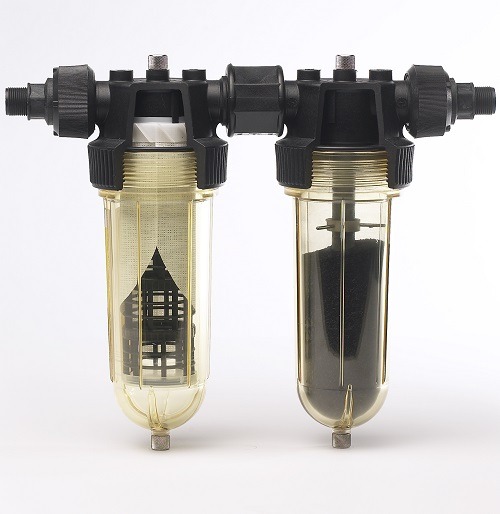
About 71 percent of the earth's surface is covered by water. But despite this massive amount of water, many people from certain countries are suffering and dying because of thirst. They have no access to clean drinking water. This problem is primarily due to water contamination.
There are substances that can get into the water and make it unsafe for drinking. These substances are called contaminants. There are many types of water contaminants. Some are man-made while others are naturally present in the environment. Some can be removed from the water with the use of a water filter or water purification system while others stay permanently in the water. The water contaminants also vary in terms of severity of the threat. Some pose serious health threats while others cause nothing more than minor inconveniences.
Contaminants are generally categorized as being physical, chemical, biological, or radiological. Physical contaminants are those that cause noticeable changes to the appearance and physical properties of the water. A change in color or presence of visible particles in the water are common signs of physical contamination.
Chemical contaminants are man-made or naturally-occurring elements and compounds like pesticides and minerals. Some chemical contaminants are easily detected through taste, smell or visual inspection while others require proper water analysis to identify the problem.
Biological contamination describes the presence of microorganisms in the water like parasites and bacteria. Radiological contaminants are a special type of chemical contamination that involves radioactive substances like uranium and cesium.
0 notes
Text
Beryllium and Radionuclide in Water
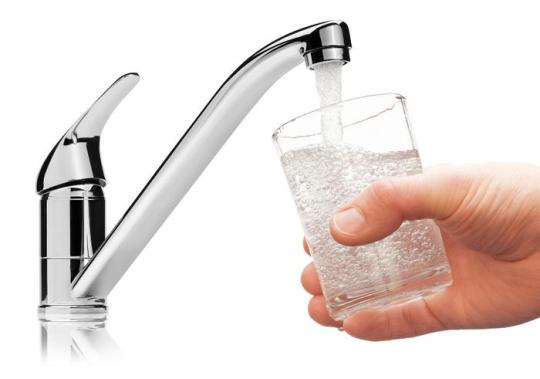
Information is the greatest weapon against the threat of contamination that can endanger the quality and safety of water in homes. Knowing about the different types of contaminants and how they can get into the water supply is vital for preventing contamination from happening. Performing water analysis without knowing what exactly is being searched for is costly and impractical. The same goes for the installation of a water filter. Different kinds of filters have contaminants that they can and cannot remove from the water. Beryllium and radionuclide are two of the many water contaminants that are worth knowing about.
Beryllium is a metallic element and is naturally present in the environment. The metal is colorless and odorless when dissolved in water. This makes it hard to detect without performing water analysis. Beryllium can get into the water through the erosion or weathering of soil. The metallic element is also present in the wastes and discharges from the aerospace industry and the operation of nuclear reactors. Ingesting water that has been contaminated by beryllium can lead to various problems of the digestive systems such as the occurrence of intestinal lesions.
A radionuclide is an atom with an unstable nucleus which causes it to emit radiation in order to achieve a more stable state. The radiation that it emitted is called ionizing radiation which can affect other atoms and molecules such as those that make up the DNA. The disruption of the DNA can lead to the development of cancer cells. People who are exposed to water that has been contaminated by a radionuclide have increased risk of getting cancer.
0 notes